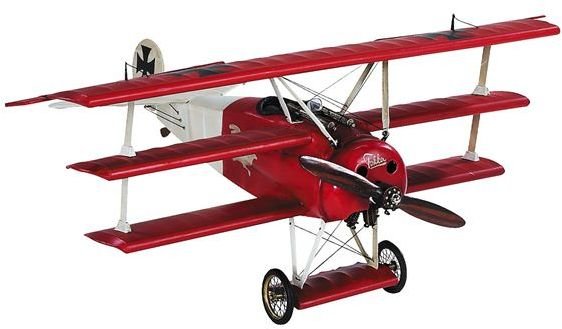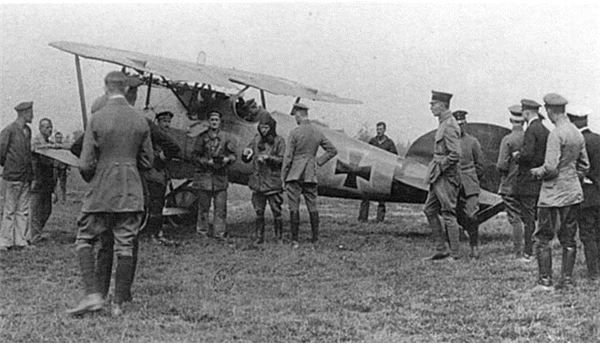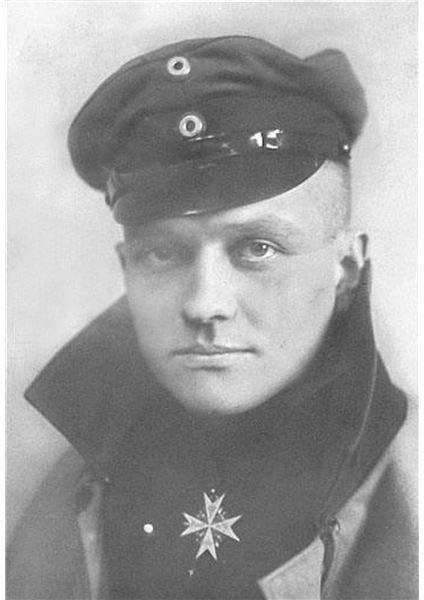Ace in the Sky - Red Baron Airplanes: Alfred von Richthofen Airplanes
Red Baron - Manfred von Richthofen
The Red Baron, whose real name was Manfred Albrecht Freiherr von Richthofen, was the most famous German flying ace of World War I. He had a very short flying career, which spanned just over half of World War I, and died at the age of 25 in April 1918 after being shot down over Morlancourt Ridge, near the Somme. He was officially credited with 80 air combat victories, though further review of data has shown that the number may have been closer to 100.
As for Red Baron airplanes, all were Fokkers, or Albatroses, plus one Halberstadt D.II.
Fokker Airplanes
The Fokker Red Baron airplanes included the Fokker Eindecker and the famous Fokker Dr. I triplane. The Dr. I became most readily associated with Richthofen, even though it was late in 1917 before he is believed to have flown this type of plane exclusively. Twenty of his credited 80 air combat victories were made in this triplane. It is also the type of plane he was flying when he was killed in April 1918. It was widely used by the Germans during the spring of 1918.

Fokker was famous well before creating the Red Baron airplanes. The first one used in World War I was the M.5. These were soon armed with machine guns that fired through the propeller, thanks to a synchronization gear developed by Anthony Fokker. At this time, the M.5 became the Fokker Eindecker, one of the most feared planes over the Western Front in 1916.
Albatros Airplanes
The Red Baron airplanes made by Albatros evolved steadily throughout World War I. The first plane flown by Richthofen was an Albatross C.III, a two-seat general use biplane that was eventually produced in larger numbers than any C series Albatros. It was used for photo-reconnaissance, bomber escort, and light bombing, and is the plane that Richthofen trained as a pilot in.
The Albatros D series included the D.I, D.II, D.III, D.V, and the D.Va. This series rapidly evolved due to battlefield needs, and most models were around for only months before being replaced. The D.I was powered with different engines, including the Mercedes D.III and the Benz Bz.III, which were powerful engines. Richthofen is not recorded as flying a D.I, but he did fly the D.II, D.III, and D.V.
The D.II was made in response to pilots’ need for better upward vision. The upper wing was repositioned closer to the fuselage and staggered forward, and the cabane struts were rearranged. Otherwise it was the same as the D.I in terms of fuselage and engine installation and performed basically the same.
The D.III was the German’s preeminent fighter in the spring of 1917, also known as “Bloody April.” Besides being flown by Richthofen, it was also flown by top German pilots Erich Lowenhardt, Karl Emil Schafer, Ernst Udet, and Kurt Wolff.
Because the D.IV was an experimental platform, the next Albatros used in combat was the D.V. It had a redesigned fuselage and the same wing structure of the D.III. The D.Va was a version of the D.V that was produced later, and with a 180 HP engine.

The Halberstadt
The Halberstadt D.II was another of the Red Baron airplanes. It was a biplane fighter of the Imperial German Army Air Service that was used through early 1916, but it wasn’t long before this plane was superseded by the better Albatros fighters, which began their dominance in the fall of 1916.
The list of airplanes flown by Manfred von Richthofen (the Red Baron), in the basic order in which he flew them are as follows: 1916: Albatros C.III, Fokker Eindecker, Albatros D.II; 1917: Albatros D.III, Halberstadt D.II, Albatros D.V (in which Richthofen received a non-fatal head wound), Fokker Dr.I triplane (which Richthofen flew from 1917 into 1918, and in which he was killed).
